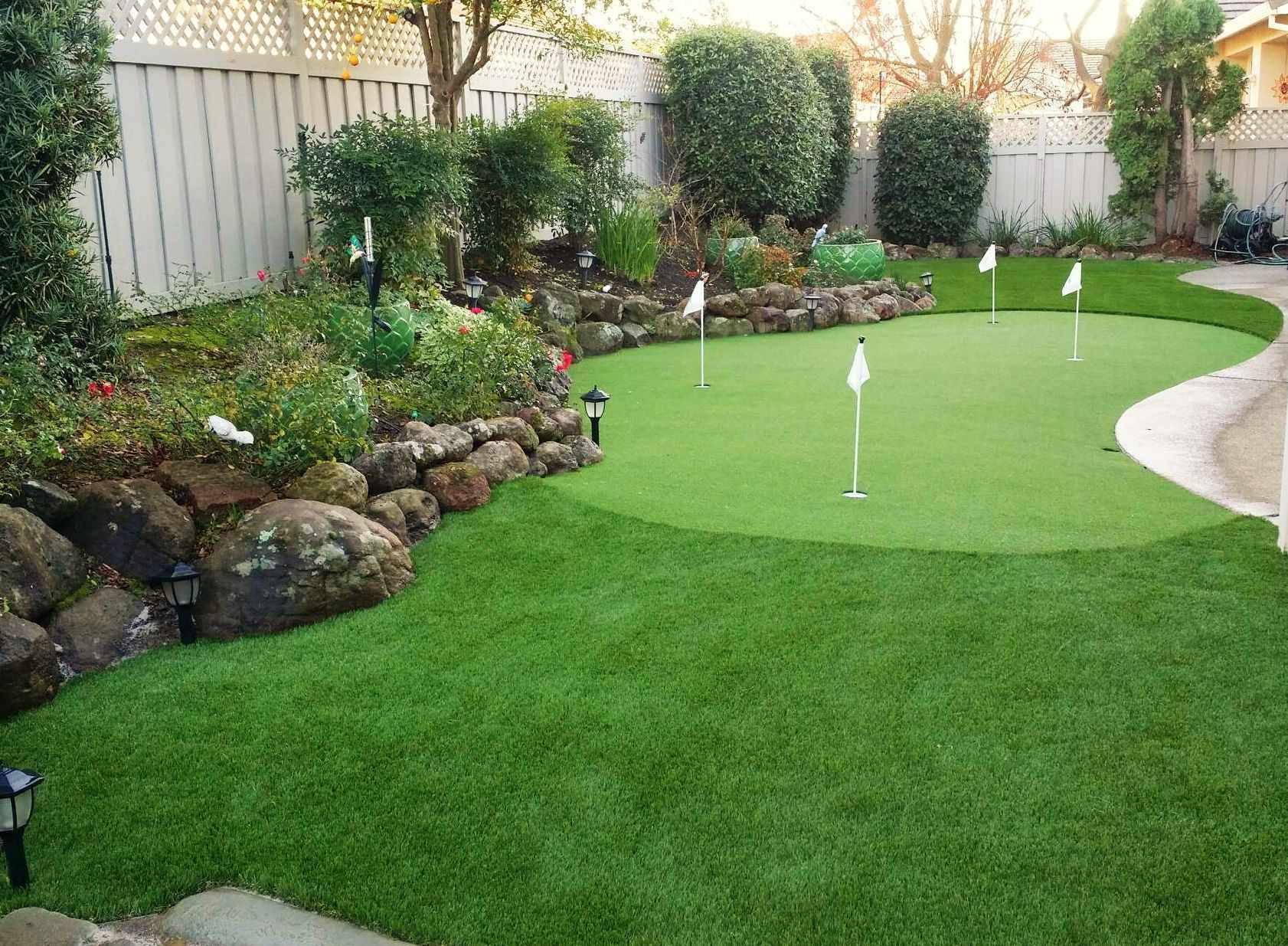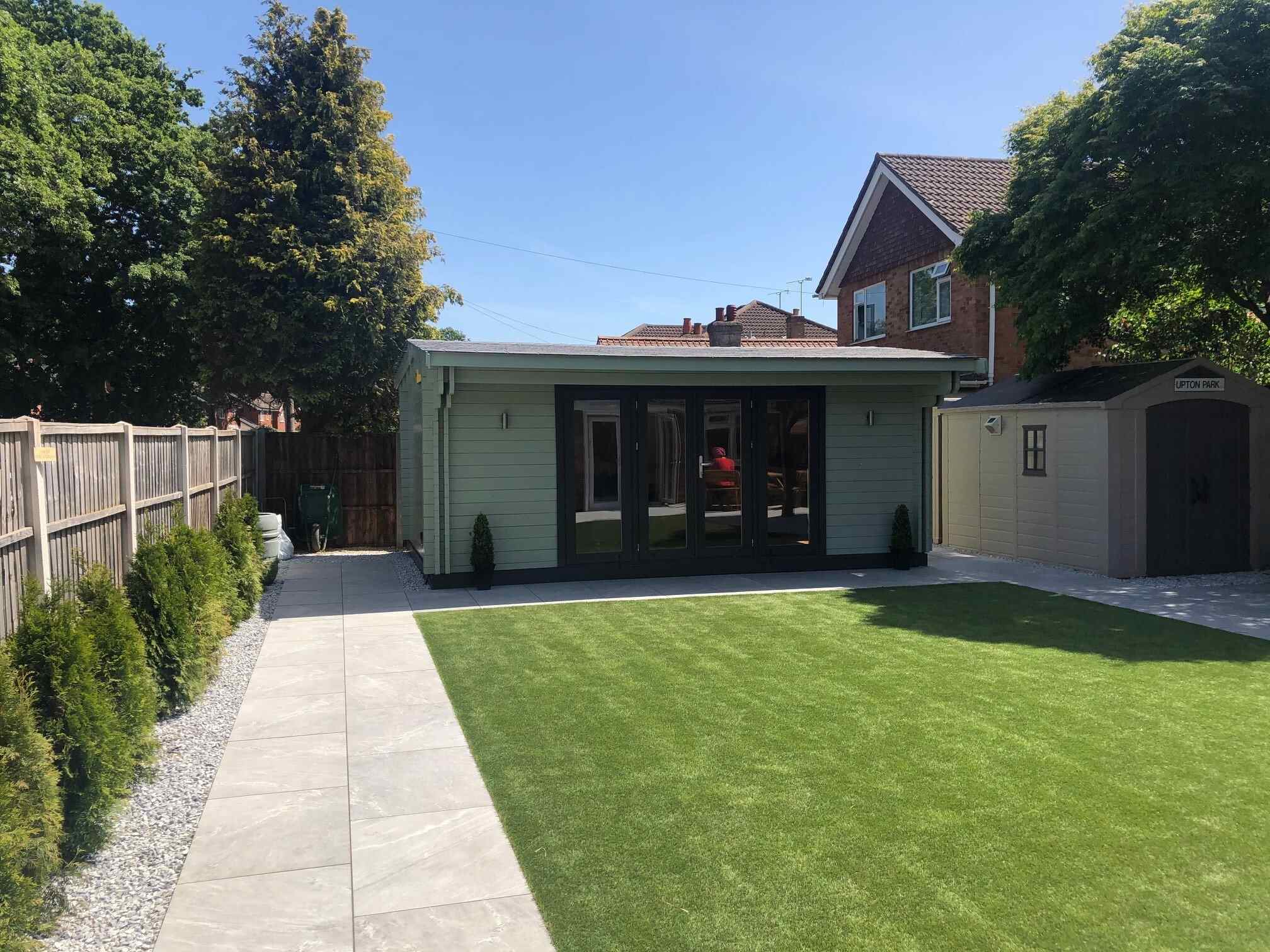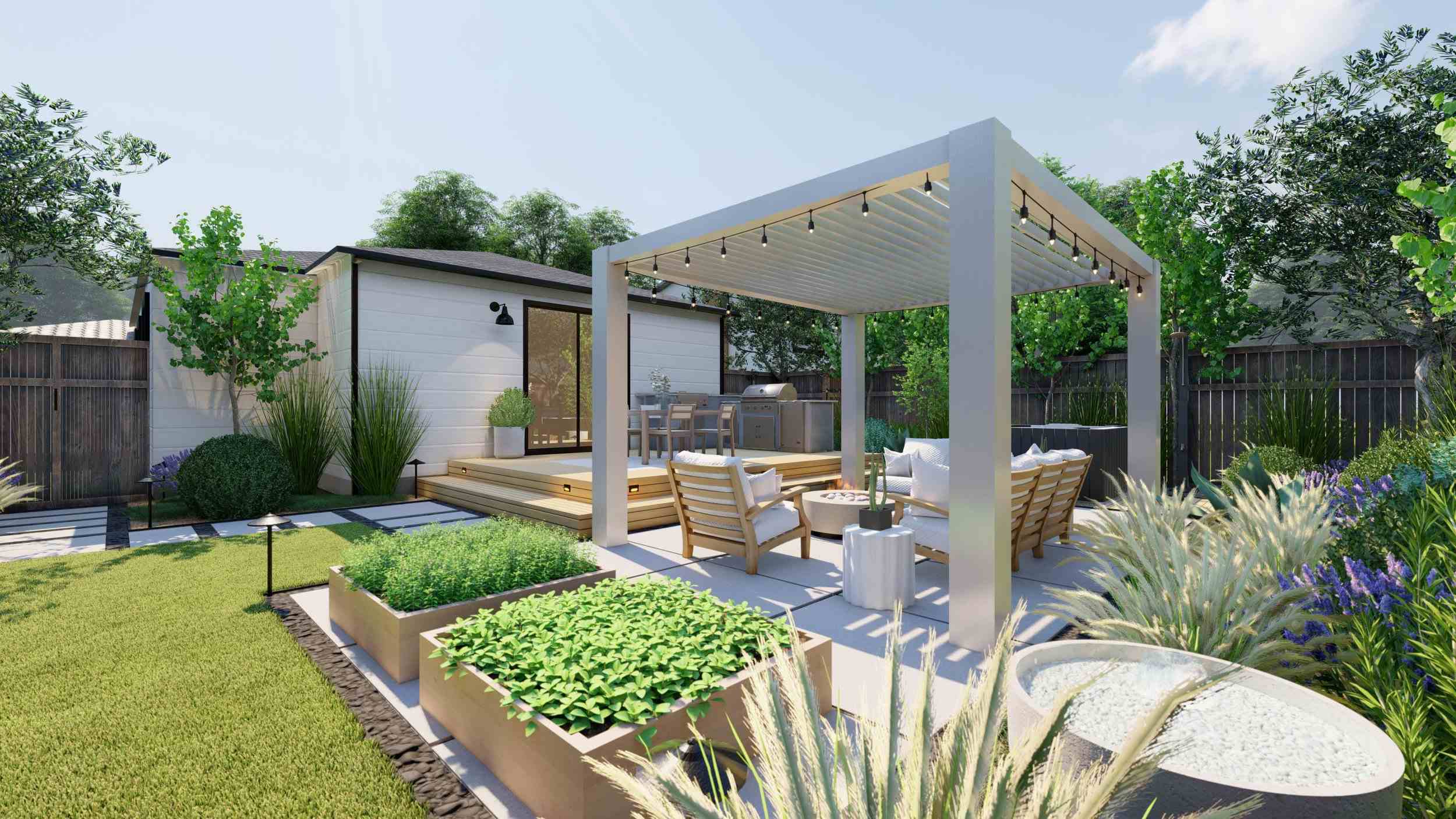Home>Gardening Tips and Tricks>Eco-Friendly Gardening>How To Practice Golf In The Backyard


Eco-Friendly Gardening
How To Practice Golf In The Backyard
Modified: January 22, 2024
Discover the best eco-friendly gardening tips to practice golf in your backyard. Create a sustainable outdoor space and enjoy golfing while promoting a greener environment.
(Many of the links in this article redirect to a specific reviewed product. Your purchase of these products through affiliate links helps to generate commission for Chicagolandgardening.com, at no extra cost. Learn more)
Table of Contents
- Introduction
- Benefits of Practicing Golf in the Backyard
- Setting Up Your Backyard Golf Practice Area
- Essential Equipment for Backyard Golf Practice
- Warm-up Exercises for Your Backyard Golf Practice
- Practicing Different Golf Shots in the Backyard
- Creating Challenging Drills and Games for Backyard Golf Practice
- Improving Your Putting in the Backyard
- Tips for Effective Backyard Golf Practice
- Conclusion
Introduction
Welcome to the world of eco-friendly gardening, where you can turn your backyard into a green and sustainable paradise. One aspect of eco-friendly gardening that has gained popularity in recent years is practicing golf in your own backyard. Not only does this allow you to improve your golf skills, but it also offers numerous benefits for the environment.
Golf is often associated with large, resource-consuming courses that require extensive maintenance and water usage. However, by practicing golf in your backyard, you have the opportunity to minimize your ecological footprint. With some creative planning and the right equipment, you can create a sustainable outdoor space that promotes both your passion for golf and your commitment to the environment.
Aside from the eco-friendly advantages, practicing golf in the backyard offers convenience and flexibility. No more need to drive to the golf course or pay expensive green fees. You can enjoy playing golf whenever you want, right in the comfort of your own home. Whether you’re a seasoned golfer looking to refine your skills or a beginner eager to learn, the backyard provides an ideal space for honing your golfing abilities.
This comprehensive guide will walk you through the process of setting up a backyard golf practice area, selecting the necessary equipment, warming up before each session, practicing various golf shots, and even creating challenging drills and games. Additionally, we will provide tips and tricks to help you maximize the effectiveness of your backyard golf practice sessions.
So, grab your clubs, put on your golfing shoes, and let’s dive into the world of eco-friendly gardening through practicing golf in the backyard. Get ready to transform your outdoor space into a haven for golf enthusiasts while treading lightly on the environment.
Benefits of Practicing Golf in the Backyard
Practicing golf in the backyard offers a multitude of benefits that go beyond improving your swing. Let’s explore some of the advantages:
- Convenience and Accessibility: Having a backyard golf practice area means you have 24/7 access to improve your skills. No need to book tee times or commute to a golf course. You can practice whenever you have spare time, even in your pajamas if you wish!
- Cost Savings: Eliminate the need for expensive golf course memberships and green fees. With a backyard practice area, your only investment is in the equipment and initial setup, which pays off in the long run.
- Time Efficiency: Utilizing your backyard for golf practice saves you valuable time. Say goodbye to the time spent driving to and from the golf course. You can make the most of your practice time by focusing solely on improving your skills.
- Eco-Friendly: By practicing golf in the backyard, you reduce your carbon footprint and contribute to a more sustainable lifestyle. You eliminate the need for energy-consuming golf course maintenance and avoid the use of chemicals that may harm the environment.
- Customization: Your backyard practice area allows you to tailor the space to your specific needs. You can design the layout, add features, and create a practice environment that mimics the challenges you face on the course.
- Privacy: Enjoy the luxury of practicing in your own private space. Eliminate the pressure and distractions that may come from other golfers watching you on a traditional golf course.
- Fitness Benefits: Golfing in the backyard provides an opportunity for physical exercise. Walking around your backyard, swinging the club, and retrieving balls all contribute to improved fitness and overall well-being.
- Family Bonding: Transforming your backyard into a golf practice area can be a great way to involve your family and friends. Encourage them to join in and enjoy quality time together while fostering a love for the game.
As you can see, practicing golf in the backyard offers a range of benefits that extend beyond golf skill improvement. Take advantage of the convenience, cost savings, and eco-friendly aspects, while enjoying the customization and privacy of your personal practice space. It’s time to embrace the opportunities that come with practicing golf in your own backyard!
Setting Up Your Backyard Golf Practice Area
Creating a dedicated area in your backyard for golf practice is an exhilarating endeavor that requires proper planning and preparation. Follow these steps to set up your backyard golf practice area:
- Assess Your Space: Start by evaluating the available area in your backyard. Consider factors such as size, terrain, and potential obstacles. Determine if you have enough space for a full swing, chipping, and putting practice.
- Clear the Area: Remove any debris, rocks, or objects that may interfere with your practice. Clearing the area ensures a safe and suitable space for your golf practice activities.
- Create Boundaries: Establish clear boundaries for your practice area. You can use markers, cones, or even natural landmarks such as trees or shrubs to define your hitting area and target zones.
- Install a Net or Backdrop: To prevent golf balls from flying out of your practice area and causing damage, it is essential to install a high-quality golf net or erect a suitable backdrop. This will provide a safe and controlled environment for your practice sessions.
- Consider Artificial Turf: If the natural grass in your backyard is not suitable for golf practice or requires extensive maintenance, you may want to consider installing artificial turf. This provides a consistent surface for practicing your shots without the need for constant upkeep.
- Add Putting Green: If space allows, consider dedicating a section of your practice area to a putting green. This will allow you to work on your short game skills and develop a smooth putting stroke.
- Set Up Targets and Markers: Place various targets and markers throughout your practice area to simulate different golf course scenarios. Use cones, flags, or even old buckets as targets to aim for and improve your accuracy.
- Lighting and Amenities: If you plan to practice after dark, consider installing outdoor lighting to ensure visibility. Additionally, include amenities such as seating, storage for your golf equipment, and water access for hydration during practice sessions.
- Add Personal Touches: Enhance the ambiance of your backyard golf practice area by adding personal touches. Decorate the space with plants, golf-themed decorations, or even a small sound system to make your practice area more enjoyable.
Setting up your backyard golf practice area requires thoughtful planning and attention to detail. Assess your available space, clear the area, establish boundaries, and invest in quality equipment like nets and artificial turf. By following these steps, you can create a functional and inviting practice area that will enhance your golfing skills and bring you joy for years to come.
Essential Equipment for Backyard Golf Practice
When setting up your backyard golf practice area, it’s crucial to have the essential equipment to ensure a productive and enjoyable practice session. Here are the key items you’ll need:
- Golf Clubs: Select a set of golf clubs that suits your skill level and preferences. Ensure you have a driver, irons, wedges, and a putter to cover all aspects of the game.
- Golf Balls: Stock up on an ample supply of golf balls to avoid constantly chasing after errant shots. Look for durable, practice-grade balls that offer good performance and are suitable for your practice area.
- Golf Net: Invest in a high-quality golf net to catch your shots and prevent them from flying out of your practice area. Make sure the net is large enough to comfortably and safely accommodate your swings.
- Hitting Mat: Opt for a hitting mat or golf turf that allows you to practice your swing without damaging the grass or wearing out your practice area. Look for a mat that provides realistic feedback and is built to withstand repeated use.
- Chipping Nets: Chipping nets are excellent tools for honing your short game skills. These portable and collapsible nets help you practice chip shots and improve accuracy around the green.
- Putting Green: If feasible, consider adding a putting green to your backyard practice area. Choose a synthetic putting green or create one using high-quality putting turf to replicate the feel of a real putting surface.
- Alignment Aids: Use alignment aids such as alignment sticks or rods to help position your body correctly and align your shots accurately. These visual guides are valuable tools for improving your swing mechanics.
- Golf Bag: Keep your clubs organized and protected with a sturdy golf bag. Select a bag that is suitable for your practice needs and offers ample storage space for your equipment.
- Scorecard and Pencils: Keep track of your progress and practice performance with a scorecard and pencils. This allows you to monitor your improvement over time and set goals for your backyard golf practice sessions.
- Comfortable Seating: Add a comfortable seating area or golf bench to your backyard practice area. This provides a place to rest between shots and allows you to enjoy your practice sessions for longer periods.
Having the right equipment is essential to optimize your backyard golf practice sessions. Invest in quality golf clubs, balls, nets, and a hitting mat that suits your needs. Consider adding chipping nets, a putting green, and alignment aids to enhance your practice experience. Don’t forget about the convenience of a golf bag, scorecard, and comfortable seating. With the right equipment in place, you can fully enjoy your backyard golf practice and make significant improvements to your game.
Warm-up Exercises for Your Backyard Golf Practice
Prior to diving into your backyard golf practice session, it’s important to warm up your body and prepare it for the physical demands of the game. Incorporating warm-up exercises into your routine can help improve your flexibility, prevent injuries, and enhance your performance. Here are some effective warm-up exercises to consider:
- Dynamic Stretches: Begin with a series of dynamic stretches to engage your muscles and increase blood flow. Perform exercises such as arm circles, torso twists, and shoulder rolls to loosen up your upper body. For your lower body, try leg swings, lunges, and hip rotations.
- Shoulder Rotations: Golf requires a significant amount of shoulder mobility and flexibility. Stand with your feet shoulder-width apart and rotate your shoulders clockwise and counterclockwise. This will help warm up the shoulder joints and improve your range of motion during your swings.
- Core Activation: Engage your core muscles by doing exercises such as planks, Russian twists, or standing twists. A strong core is crucial for maintaining balance, stability, and generating power throughout your golf swing.
- Hip Rotations: Stand with your feet hip-width apart and rotate your hips in a circular motion. This exercise helps loosen up the hip joints and improves your ability to rotate your body during the swing, promoting a smoother and more efficient motion.
- Arm and Wrist Warm-up: Extend your arms out in front of you and rotate your wrists in both directions. This helps mobilize the joints and prepares your arms and wrists for the repetitive motion of the golf swing.
- Lunges with a Twist: Perform lunges while twisting your torso towards the front knee. This exercise helps improve your balance, leg strength, and rotational flexibility, all of which are essential for a powerful and controlled golf swing.
- Balance Exercises: Enhance your stability and balance by standing on one leg and holding the position for 30 seconds. Repeat on the other leg. This exercise not only warms up your lower body but also helps develop the stability required in your golf swing.
- Club Swings: Begin your practice session by swinging a club without hitting a ball. Start with slow, controlled swings, gradually increasing the speed and intensity. This helps to reinforce your golf swing mechanics and gets your muscles accustomed to the movement.
- Golf-Specific Drills: Incorporate golf-specific drills and exercises into your warm-up routine. This could include practicing your grip, doing partial swings with focus on specific swing positions, or even doing shadow swings in front of a mirror to ensure proper form.
Remember, warming up is essential for preparing your body for the physical demands of golf. Spend 10-15 minutes performing a combination of dynamic stretches, rotations, core activation exercises, and golf-specific movements. By incorporating these warm-up exercises into your backyard golf practice routine, you’ll enhance your performance and reduce the risk of injuries, allowing you to get the most out of your practice sessions.
Practicing Different Golf Shots in the Backyard
Your backyard practice area provides a perfect space to work on various golf shots and improve your overall game. By practicing different shots, you can enhance your skills, develop consistency, and gain confidence in your abilities. Here are some key shots to practice in your backyard:
- Full Swing: The full swing is the foundation of your golf game. Use your backyard practice area to work on your grip, alignment, and proper swing mechanics. Focus on generating power and maintaining a balanced finish. Experiment with different clubs to practice distance control and shot shaping.
- Chipping: Chipping is essential for successful short game play. Set up targets in your backyard and practice different chip shots from various distances. Work on your technique, soft touch, and accuracy. Experiment with different clubs to control trajectory and spin.
- Pitching: Pitching allows you to hit shots with a higher trajectory and more spin. Set up targets at different distances and practice pitching with various clubs. Focus on maintaining a consistent tempo, controlling distance, and landing the ball softly on the target.
- Bunker Shots: If you have a sand-filled area or a bunker in your backyard practice area, incorporate bunker shots into your practice routine. Practice getting out of the sand, controlling distance, and hitting accurate shots. Experiment with different club selections and various bunker shot techniques.
- Putting: Use a dedicated putting green or a flat area to practice your putting skills. Set up targets at different distances and work on your pace, line, and stroke. Practice different putting drills and focus on a smooth and consistent stroke. Develop your ability to read greens and improve your distance control.
When practicing different golf shots in your backyard, it’s important to approach each shot with focus and intention. Pay attention to your alignment, grip, and posture. Work on developing a consistent pre-shot routine, visualizing the shot, and executing with confidence. Don’t be afraid to experiment with different clubs, stances, and shot techniques to broaden your skill set.
As you practice different golf shots, keep track of your progress and areas for improvement. Take note of any patterns or tendencies in your shots and use this information to refine your technique. Remember to incorporate your warm-up exercises and to practice with purpose and concentration. By dedicating time to practicing different golf shots in your backyard, you’ll see significant improvements in your overall game and be better prepared for the challenges on the golf course.
Creating Challenging Drills and Games for Backyard Golf Practice
Adding a touch of fun and challenge to your backyard golf practice can help keep you motivated and engaged. By creating challenging drills and games, you can simulate on-course scenarios, improve your decision-making skills, and enhance your overall performance. Here are some ideas to inspire your backyard golf practice sessions:
- Target Practice: Set up various targets in your backyard, such as hoops, flags, or even old buckets, at different distances and angles. Challenge yourself to hit specific targets and score points based on your accuracy. You can assign different point values for hitting specific targets or require hitting targets within certain areas to score.
- Obstacle Course: Create an obstacle course using items like garden chairs, hula hoops, or even small cones. Designate a specific order to navigate the course and complete each shot successfully. This drill improves your shot-making skills, helps you adapt to different situations, and enhances your ability to control your ball flight.
- Up and Down Challenge: Start by chipping or pitching the ball to a designated area. Once you’ve reached your target, practice hitting a bunker shot or a difficult chip shot. The goal is to get up and down from different lie conditions to save par or make a bogey. This drill mimics real on-course situations and helps you develop a strong short game.
- Putting Competition: Create a putting competition with family or friends. Set up a series of challenging putting holes in your backyard and take turns putting. Keep score and compete against each other to add a competitive element to your practice. This game not only improves your putting skills but also adds excitement and camaraderie to your backyard practice sessions.
- Practice Area Roulette: Designate different areas of your practice area for specific shots. Assign different clubs to each area and rotate through them randomly. This game forces you to adapt quickly, select the appropriate club, and execute different shots under pressure.
- Virtual Golf Course: Use your imagination to create a virtual golf course in your backyard. Visualize the layout of an actual golf course and designate targets and landing areas accordingly. Play a round of golf in your mind and practice each shot as if you were on the course. This game improves your course management skills and helps you make strategic decisions.
When creating challenging drills and games, be creative and adapt them to suit your skill level and practice needs. Incorporate competition, time limits, and scoring to keep yourself engaged and motivated. Adjust the difficulty level as you progress and focus on specific areas of your game that require improvement.
Remember, the purpose of incorporating challenging drills and games into your backyard golf practice is to make the learning process enjoyable and stimulating. By adding a competitive element and simulating on-course situations, you’ll not only enhance your skills but also develop mental toughness and resilience needed on the golf course.
Improving Your Putting in the Backyard
One area of the game that requires special attention is putting. Taking the time to improve your putting skills in your backyard practice area can have a significant impact on your overall golf performance. Here are some tips to help you enhance your putting game:
- Create a Putting Green: If space allows, dedicate a section of your backyard practice area to a putting green. Use synthetic putting turf or natural grass to recreate the feel of a real putting surface. Having a dedicated area to practice your putting allows you to focus solely on this crucial aspect of the game.
- Practice Different Distances: Work on putts from various distances that you commonly face on the golf course. Incorporate short putts, medium-length putts, and longer lag putts into your practice routine. By practicing different distances, you will develop a better sense of touch and improve your distance control.
- Focus on Alignment and Setup: Pay attention to your alignment and setup when addressing the ball. Ensure your shoulders, hips, and feet are parallel to the target line. Practice setting up consistently for every putt to create a repeatable and reliable stroke.
- Develop a Smooth Pendulum Motion: Focus on maintaining a smooth and consistent pendulum-like motion with your putting stroke. This involves using your shoulders and arms to create a natural back and through swing, with minimal wrist movement. Practice a rhythmic stroke that promotes a straight and accurate roll of the ball.
- Work on Visualizing the Putting Line: Develop your ability to read greens by visualizing the putting line. Before each putt, take a moment to assess the slope and undulations of the green. Picture the intended path and roll of the ball in your mind. This visualization will help you make more accurate reads and improve your putting accuracy.
- Practice with Gate Drills: Set up two tees or alignment sticks on either side of the hole to create a “gate” for your putt. Aim to roll the ball through the gate without touching the sides. This drill helps improve your putting accuracy and teaches you to start the ball on your intended line.
- Putt with Intention and Consistency: While practicing, set specific targets or holes to putt to. Aim for a specific spot on the hole or practice making a certain number of putts in a row. This focus on targets and consistency will sharpen your putting skills and build confidence.
- Practice Under Pressure: Put yourself in pressure situations during practice. Create games or challenges where you have to make a certain number of putts in a row or sink a putt to win. This will simulate the pressure you feel on the course and help develop your ability to perform under challenging circumstances.
Improving your putting in the backyard requires practice, focus, and attention to detail. Use your dedicated putting green or a flat area to develop a smooth and consistent putting stroke. Work on alignment, setup, distance control, and visualization techniques. Incorporate drills, gate exercises, and practice under pressure to mimic real-game scenarios. By dedicating time and effort to your putting practice, you’ll see improvements in your overall scoring and gain confidence on the greens.
Tips for Effective Backyard Golf Practice
Maximizing the effectiveness of your backyard golf practice sessions involves more than just hitting balls into a net. By following these tips, you can ensure that your practice time is productive and beneficial:
- Set Specific Goals: Before each practice session, set specific goals and objectives. Whether it’s improving your swing mechanics, honing your short game, or working on your putting, having a clear focus will help you structure your practice and measure your progress.
- Practice with Intention: Approach your backyard practice sessions with intention and focus. Each shot should have a purpose. Visualize the shot, go through your pre-shot routine, and analyze the result. This level of mindfulness will aid in building muscle memory and improving your overall performance.
- Establish a Consistent Routine: Develop a consistent practice routine that mirrors your on-course routine. This includes warming up, starting with the short game, progressing to the full swing, and finishing with putting. Consistency in your routine will help you build confidence and develop a rhythm during practice.
- Practice Quality over Quantity: It’s better to have short but focused practice sessions than long, repetitive ones. Give your full attention to each shot and make the most out of your practice time. Quality practice with a purpose will yield better results than mindlessly hitting golf balls.
- Take Breaks and Hydrate: Remember to take regular breaks and stay hydrated during your backyard practice sessions. Resting between shots helps maintain focus and avoid fatigue, while staying hydrated ensures optimal physical and mental performance.
- Analyze and Adjust: Analyze the results of each shot and make necessary adjustments. Pay attention to your swing mechanics, ball flight, and consistency. Use video analysis or mirrors to observe your technique and make corrections as needed.
- Practice in Different Conditions: Try to practice in different weather conditions when possible. This will help you adapt to varying winds, temperatures, and ground conditions, enhancing your ability to perform well in different golfing environments.
- Record and Review: Use your smartphone or a video camera to record your swing and review it later. This allows you to analyze your technique, identify any flaws, and track your progress over time. Seek feedback from a golf instructor if possible to gain further insights.
- Maintain a Positive Mindset: Keep a positive attitude and embrace the learning process. Golf is a challenging sport, and improvement takes time and effort. Stay patient, celebrate small victories, and use setbacks as learning opportunities.
- Enjoy the Process: Remember to have fun and enjoy the process of practicing golf in your backyard. Embrace the freedom, convenience, and relaxation that comes with having your own practice area. Appreciate the opportunity to work on your skills and nurture your love for the game.
By incorporating these tips, you can make your backyard golf practice sessions more effective and rewarding. Stay focused, set goals, and maintain a positive mindset. With purposeful practice, consistency, and a commitment to improvement, you’ll see significant progress in your golf game over time.
Conclusion
Practicing golf in your backyard offers a host of benefits, both for your golf game and the environment. By creating a dedicated practice area, you have the opportunity to improve your skills, save time and money, and minimize your ecological footprint. Setting up your backyard golf practice area requires careful planning and consideration of essential equipment, while incorporating engaging drills and games adds an element of challenge and fun to your practice sessions.
Make the most of your backyard practice area by warming up properly before each session, focusing on different golf shots, and paying attention to your putting game. Aim to practice with intention and set specific goals to enhance your practice routine. Remember to maintain a positive mindset, regularly review your performance, and enjoy the process of honing your golf skills in the comfort of your own home.
With dedication, consistency, and a commitment to improvement, practicing golf in your backyard can have a profound impact on your game. Whether you’re a seasoned golfer looking to refine your skills or a beginner eager to learn, the convenience and sustainability of backyard golf practice makes it an excellent choice for any golfer.
So, grab your clubs, step into your backyard, and let your practice sessions begin. Embrace the joy of eco-friendly gardening combined with the satisfaction of improving your golfing abilities. Your backyard practice area awaits, ready to transform your game and propel you towards success on the golf course.









